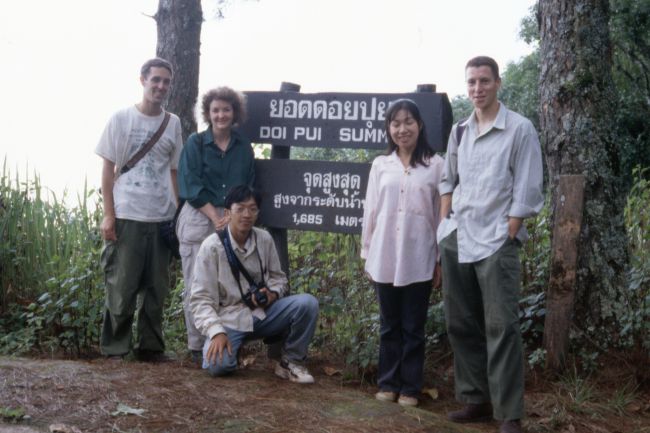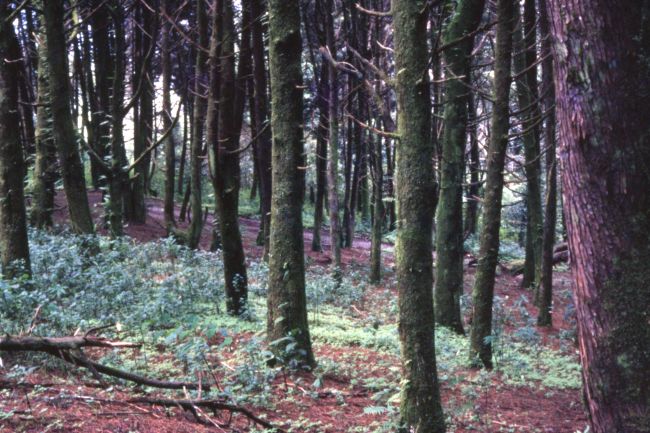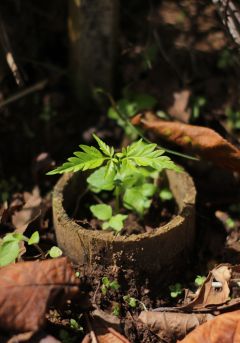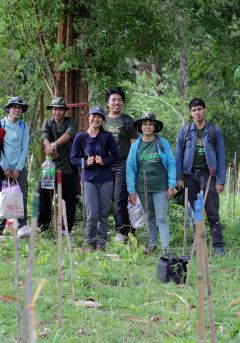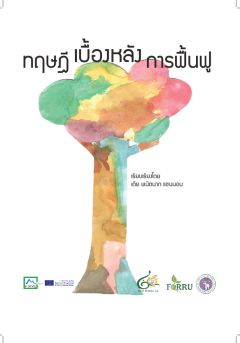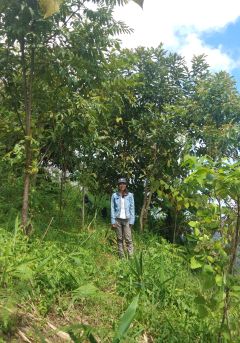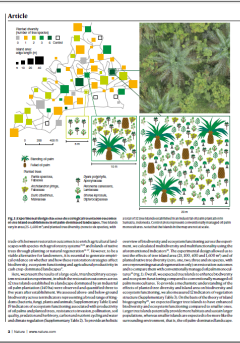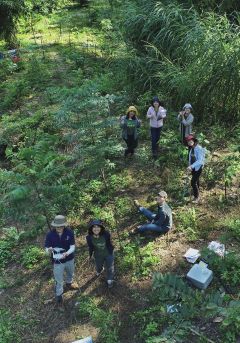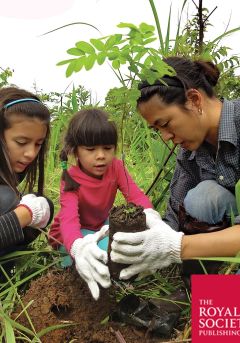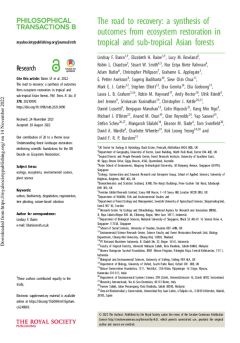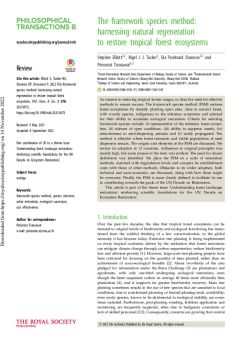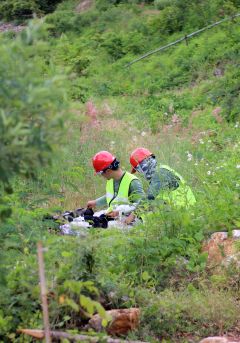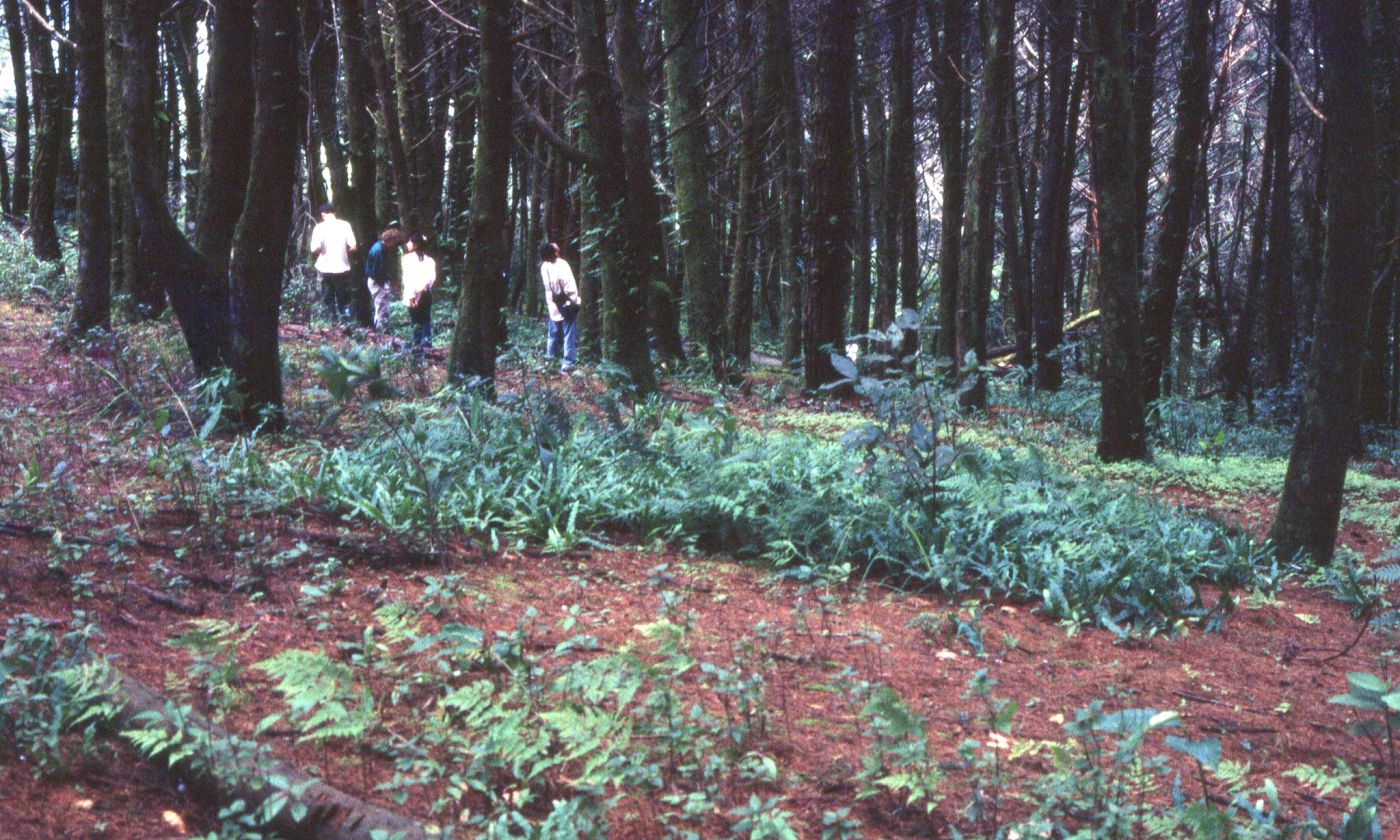
In 1999, Forest Restoration Research Unit (FORRU) assisted Doi Suthep-Pui National Park Authority with enrichment planting of an aging plantation of Cupressus torulosa D.Don (Cupressaceae) (an exotic species), on the summit of Doi Pui, with indigenous framework tree species. The plantation had a very dense canopy and a dense root mat, visible at the soil surface. Consequently, seedlings of native forest trees had not established on the site.
In May 1999, 1,440 trees of 24 species from FORRU-CMU's Doi Suthep nursery were planted over 4 rai of the site beneath the C. torulosa trees. Totally 240 trees of 23 species, were monitored 5 times for growth and survival until August 2002.
The overall percent mortality of the planted trees was 41%, whilst the growth of surviving trees was exceedingly slow. The pioneer species suffered 100% mortality, whereas survival rates of climax species were around 70 %. Most trees failed to grow taller than 1 m in 3 years (from 30-50 cm tall at planting time). The most likely explanation was that the planted trees were deprived of light and suffered from root competition, due to the dense of the C. torulosa plantation, which contributed to the poor performance. Therefore, FORRU-CMU recommended, the C. torulosa trees should be thinned before enrichment planting is made at this site.
This recommendation was applied in 2005, 200 saplings of framework tree species were planted in a thinned-out subplot of the C. torulosa plantation, whilst another 200 were planted in a control (non-thinned) sub-plot. The planted trees were monitored 4 times for growth and survival over three years after planting from 2005 until January 2008.
Survival was higher in the thinned plot (35.61%) than in the non-thinned plot (17.27%) - even though both numbers were unacceptably low. However, almost all of the planted trees in the thinned plot grew better than in the non-thinned plot. Root collar diameter and height growth of almost all trees were higher with thinning than in the non-thinned plot. Therefore, thinning of C. torulosa trees at this site (at least 30% or higher) is highly recommended, before any further enrichment planting is implemented. However, although thinning would very likely improve the performance of planted framework tree species at this site, their performance would most likely remain low compared with other FORRU-CMU field trials in more open areas.
Detailed results are available in the project reports via the download panel.
Rapid site assessment
The concept and methodology to determine the level of degradation, which is related to activities should be implemented and the intensity of the work required for the target...
Field Performance of Planted Trees
Monitoring is essential for adaptive management. Click here to learn how to measure tree survival and growth and find out if your restoration plan is working.
1: Selecting suitable tree species for direct seeding to restore forest ecosystems in northern Thailand
ABSTRACT: To upscale restoration of tropical forest ecosystems, direct seeding—sowing seeds directly into the ground—is potentially more cost-effective than tree planting. However, its success is...
2: Developing Techniques for Direct-seeding for Forest Restoration in Northern Thailand
ABSTRACT: Forest restoration by direct seeding is potentially more cost-effective than tree-planting, especially for upscaling restoration of tropical forest ecosystems. Unfortunately, its success...
3: ทฤษฎีเบื้องหลังการฟื้นฟู
หนังสือเล่มนี้ได้รวบรวมเนื้อหาครอบคลุมถึงการรบกวนที่ส่งผลต่อกระบวนการฟื้นตัวของธรรมชาติ ทำให้มวลชีวภาพลดลงและสภาพดินเปลี่ยนแปลงไป...
4: Differential seed removal, germination and seedling growth as determinants of species suitability for forest restoration by direct seeding – A case study from northern Thailand
ABSTRACT: Direct seeding is potentially a more cost-effective alternative to conventional tree planting for restoring tropical forest ecosystems. However, seed loss, due to removal and damage by...
5: Tree islands enhance biodiversity and functioning in oil palm landscapes
ABSTRACT: In the United Nations Decade on Ecosystem Restoration, large knowledge gaps persist on how to increase biodiversity and ecosystem functioning in cash crop-dominated tropical landscapes....
6: Use of drone RGB imagery to quantify indicator variables of tropical-forest-ecosystem degradation and restoration
ABSTRACT: Recognizing initial degradation levels is essential to planning effective measures to restore tropical forest ecosystems. However, measuring indicators of forest degradation is...
7: Understanding forest landscape restoration: reinforcing scientific foundations for the UN Decade on Ecosystem Restoration
Under the United Nations Decade on Ecosystem Restoration, 2021-2030, there has been no more critical or opportune time to restore forests, which are critical for the world’s species, people and...
8: The road to recovery: a synthesis of outcomes from ecosystem restoration in tropical and sub-tropical Asian forests
Abstract: Current policy is driving renewed impetus to restore forests to return ecological function, protect species, sequester carbon and secure livelihoods. Here we assess the contribution of...
9: The framework species method—harnessing natural regeneration to restore tropical forest ecosystems
Abstract: The framework species method (FSM) restores forest ecosystems by densely planting open sites, close to natural forest, with a group of woody species, characteristic of the reference...
10: Use of Unmanned Aerial Vehicle (UAV) Imagery to Monitor Progress of Early Forest Ecosystem Restoration in an Opencast Mine
ABSTRACT: Monitoring forest restoration is essential for improving and advancing restoration techniques, but human-based monitoring is costly as it requires intensive labour in the field. Although...

